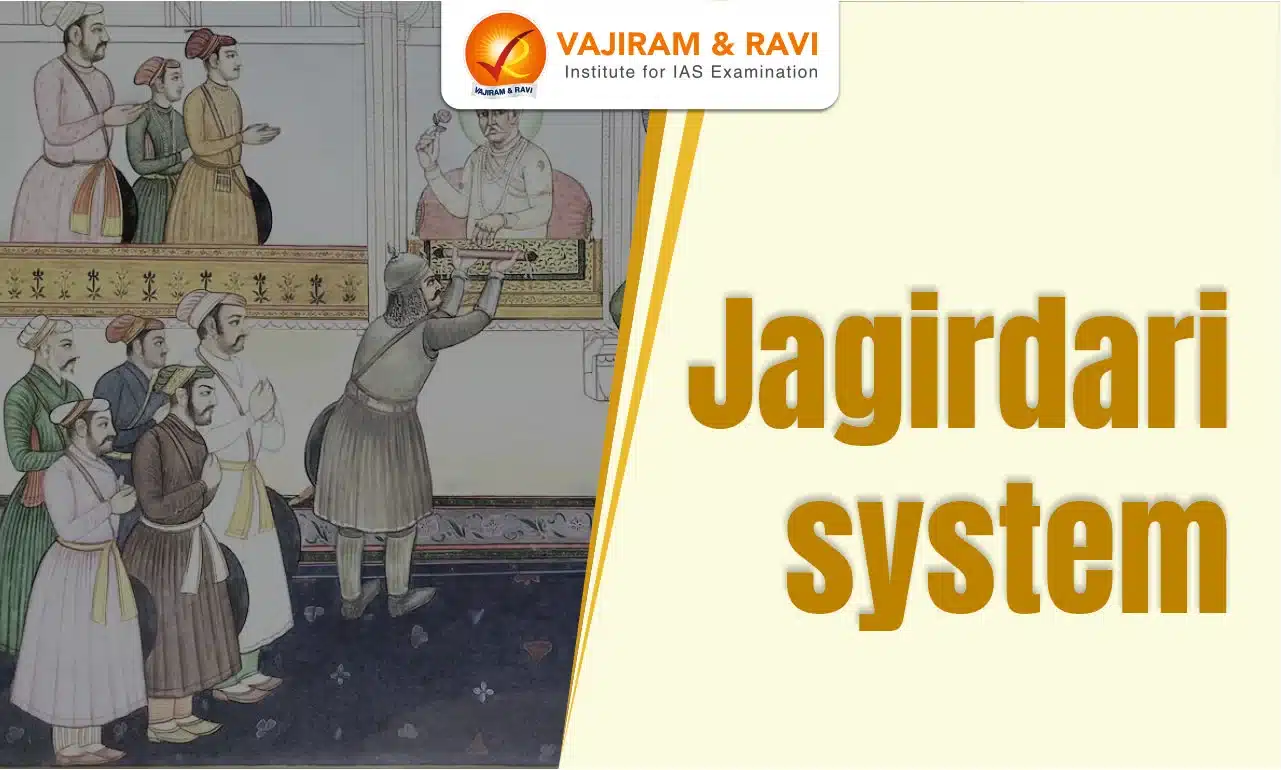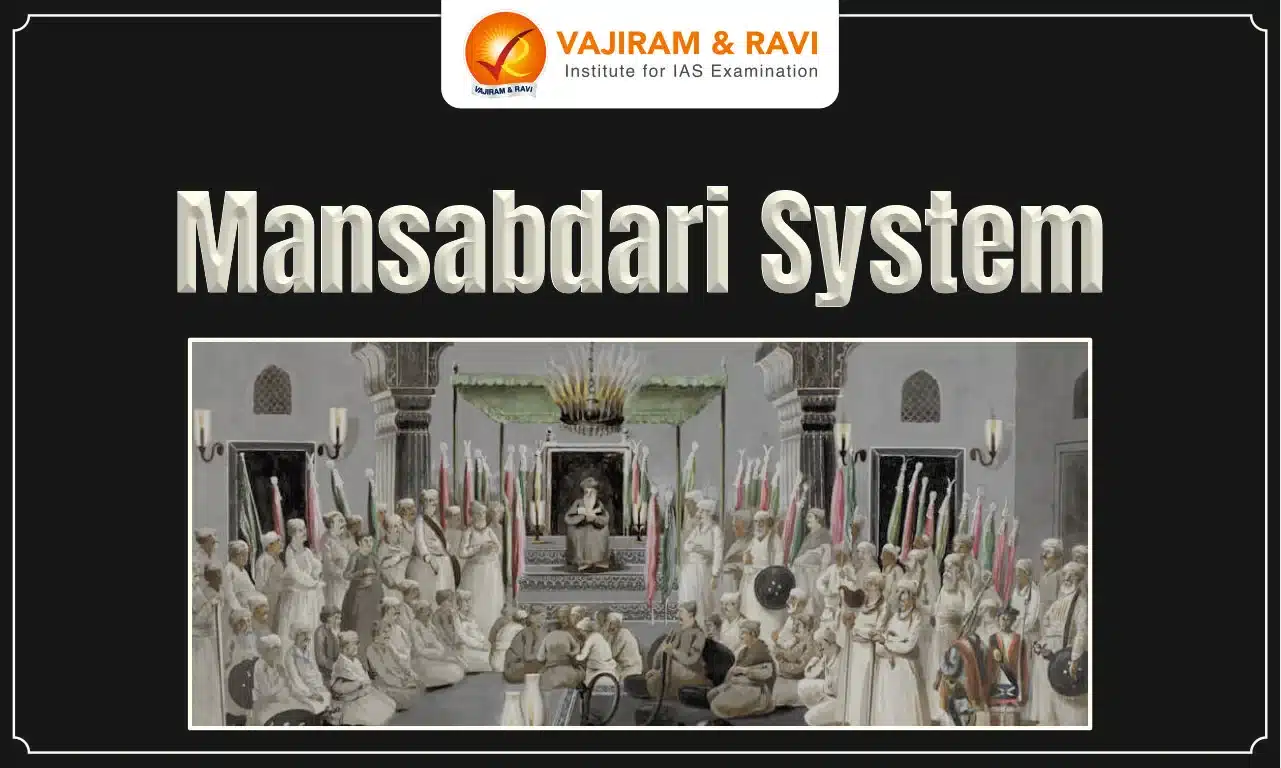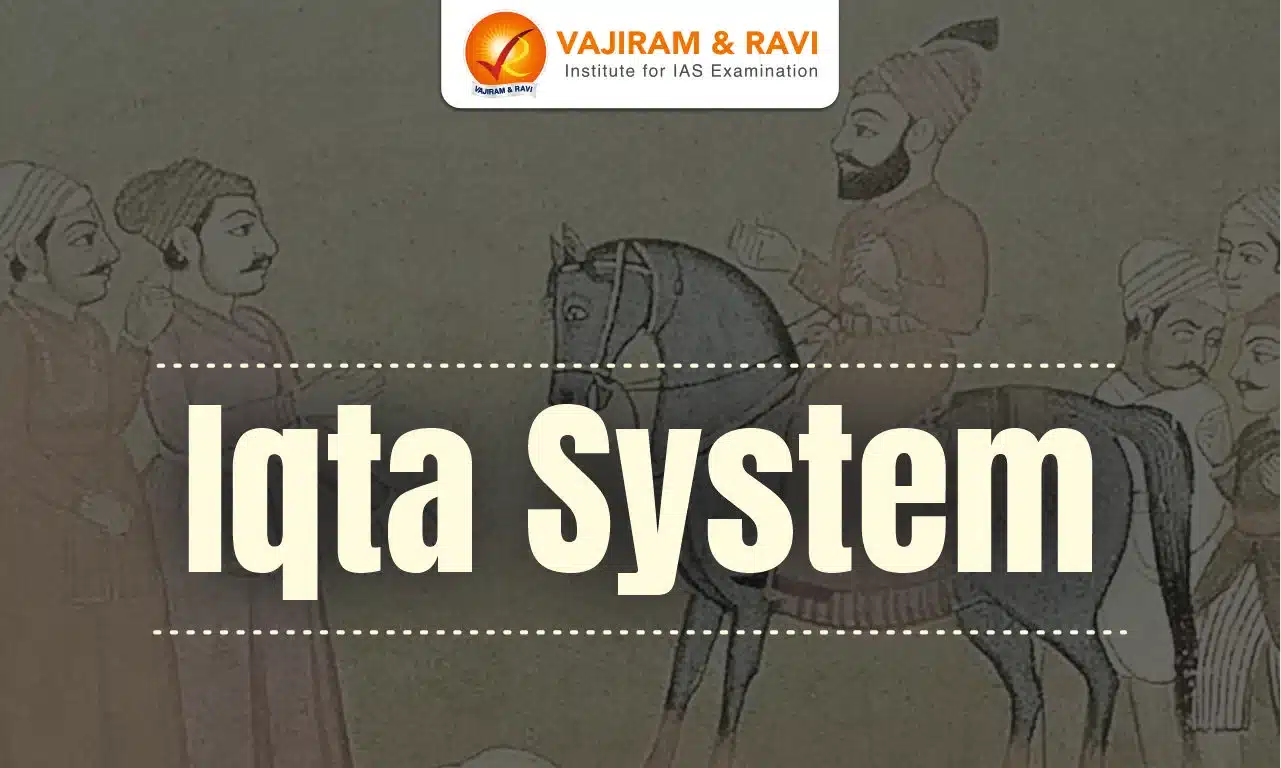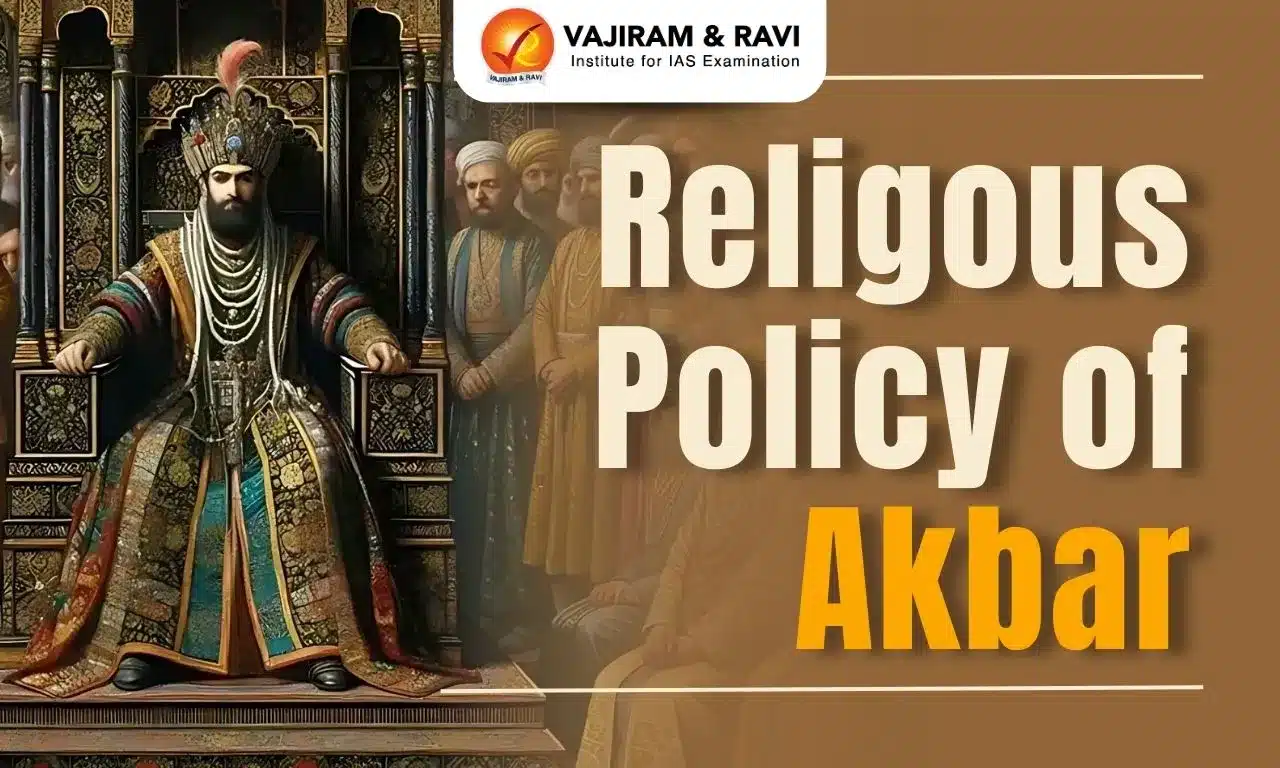Jagirdari System was a system of allocating revenue from a specific territory to nobles in lieu of cash salaries for their services to the state. The Jagirdari System was a common practice during the Delhi Sultanate, with revenue assignments referred to as iqtas. The Jagirdari system continued under the Mughal Empire, and it involved granting land (jagirs) to nobles (mansbdar) for revenue collection and governance.
Jagirdari System was essential to the Mughal Empire’s administration. Jagirdars were responsible for collecting taxes. The system incorporated various jagirs, such as Jagir Tankha, Mashrut Jagir, In’am Jagir and Watan Jagirs. The system evolved and underwent multiple changes before stabilizing. However, the basic framework was created during Akbar's reign.
Jagirdari System About
Jagirdari system, prevalent under the Mughal Empire, involved awarding land for revenue collection, called Jagir, to nobles and military personnel in return for their services. The holders of Jagirs were called Jagirdars. Jagirdars gathered revenue from these territories and maintained local government and army support. They were assigned the right to collect revenue from the land and not the land itself.
Jagirdari System Development
Jagirdari system was a crucial component of Akbar's Mansabdari system and was modified several times under his successors. All Mughal mansabdars were compensated through the assignment of jagir. During Akbar’s reign, all the territories were divided into Khalisa and Jagir. The revenue from Khalisa (Crown Land) went to the imperial territory, and the income from Jagir (Land Assignments) was allocated to Jagirdars instead of their cash salary.

Jagirdari System and Iqta System
Jagirdari System and Iqta Systems served as means of military governance and tax collection. The Delhi Sultanate instituted the Iqta system, giving nobility non-hereditary, movable land allocations in exchange for tax collection and military maintenance. In the Jagirdari system, the jagirdars collected the revenue as part of their salary.
- It was created under the Mughals and included both inherited and transferable grants.
- Iqtadars had more direct administrative and military control, whereas Jagirdars had revenue collection power and limited administrative roles.
Jagirdari System Types
Jagirdari system generally had four revenue assignments: Jagir Tankha, Mashrut Jagir, In’am Jagirs, and Watan Jagirs. The types are as follows:
- Jagir Tankha: They were assignments of land revenue instead of salary, and they were transferable every three to four years.
- Mashrut Jagir: It was offered under certain conditions, including performing specified duties, supplying certain services, or complying with governmental legislation.
- In’am Jagirs: It involved no obligation of services and was independent of rank.
- Watan Jagirs: They were allocated to zamindars in their homeland. They remained hereditary and non-transferable.
- Under Jahangir, some Muslim nobles were given jagirs resembling the watan jagir called al-tamgha.

Jagirdari System Features
Jagirdari System had several features, which included non-permanent nature of jagir assignments, revenue collection, shifting of jagirdars, etc. The features are discussed in detail below:
- Not Permanent: Jagir assignment was not permanent or hereditary. The Emperor could shift parts or the entire Jagir from one part of the imperial territory at any time. Similarly, the Emperor could also change the ratio between Jagir and Khalisa land.
- The ratio between Jagir and Khalisa fluctuated, with Khalisa accounting for only 5% of total revenue under Akbar, 10% under Jahangir, and 9% to 15% under Shahjahan.
- Revenue Collection: The estimated revenue was called Jama or jamadani as it was calculated in dam(a small copper coin). However, the actual revenue collected was called hasil.
- While paibaqi was the term for areas whose revenue was yet to be assigned to Mansabdars.
- Shifting of jagir-holders: The jagirdars were shifted from one jagir to another for administrative reasons. The system of transfers prevented jagirdars from establishing local roots.
- The system discouraged jagirdars from long-term development plans, as they prioritized short-term revenue extraction.
Jagirdari System Management
Under imperial laws, the Jagirdar could collect only approved income (mal wajib). Jagirdar used his officials (karkun) to carry out his orders, such as the amil (amalguzar) and the fotadar (treasurer). The jagirdars were under observation by the Imperial authority. In the suba, the diwan was intended to stop the jagirdars from oppressing the peasantry. The faujdar often assisted the jagirdar in collecting taxes whenever challenges occurred.
Jagirdari System Crisis
Jagirdari Crisis was one of the leading causes of the Mughal Empire's decline. During Auranzeb’s time, the system started to fall apart. When the empire expanded into Deccan and Maratha lands, more nobles began fighting for a few jagirs. This rivalry undermined the empire’s political structure and caused administrative inefficiencies. The burden of revenue collection fell heavily on cultivators, resulting in disputes and lawlessness.
Difference between Jagirdari, Mansabdari and Zamindari System
During the Mughal Empire, two land-based administrative systems were the Jagirdari and Mansabdari. Lord Cornwallis implemented the Zamindari System during British Rule. The difference between the three systems can be understood from the table below:
|
Features |
Jagirdari System |
Mansabdari System |
Zamindari System |
|
Definition |
It was land grants to the nobles and the officials for revenue collection. |
It was a ranking-based system in the Mughal Army. |
It was a revenue collection system by the zamindars from the peasants. |
|
Role |
Governance and revenue collection |
Military and administrative duties |
Collection of revenue and land management |
|
Military Responsibility |
Depending on the size of the jagir, the jagirdar had to maintain a contingent. |
Mansabdars were responsible for maintaining a specified number of troops. |
Zamindars had no military responsibility. |
|
Control over Land |
Jagirdars had administrative authority over the land but did not own it. |
Mansabdars were given administrative positions but were not associated with specific lands. |
Zamindars held hereditary rights over their land and maintained direct control over them. |
Jagirdari System UPSC PYQs
Q.1 With reference to Mughal India, what is/are the difference/differences between Jagirdar and Zamindar? (UPSC Prelims 2019)
- Jagirdars were holders of land assignments in lieu of judicial and police duties, where as Zamindars were holders of revenue rights without obligation to perform any duty other than revenue collection.
- Land assignments to Jagirdars were hereditary and revenue rights of Zamindars were not hereditary.
Select the correct answer using the code given below.
- 1 only
- 2 only
- Both 1 and 2
- Neither 1 nor 2
Ans. (d)
Q.2 Consider the following statements: (UPSC Prelims 2019)
- In the revenue administration of Delhi Sultanate, the in-charge of revenue collection was known as ‘Amil’.
- The Iqta system of Sultans of Delhi was an ancient indigenous institution.
- The office of ‘Mir Bakshi’ came into existence during the reign of Khalji Sultans of Delhi.
Which of the statements given above is correct?
(a) 1 only
(b) 1 and 2 only
(c) 3 only
(d) 1, 2 and 3
Ans. (a)
Last updated on December, 2025
→ Check out the latest UPSC Syllabus 2026 here.
→ Join Vajiram & Ravi’s Interview Guidance Programme for expert help to crack your final UPSC stage.
→ UPSC Mains Result 2025 is now out.
→ UPSC Notification 2026 is scheduled to be released on January 14, 2026.
→ UPSC Calendar 2026 is released on 15th May, 2025.
→ The UPSC Vacancy 2025 were released 1129, out of which 979 were for UPSC CSE and remaining 150 are for UPSC IFoS.
→ UPSC Prelims 2026 will be conducted on 24th May, 2026 & UPSC Mains 2026 will be conducted on 21st August 2026.
→ The UPSC Selection Process is of 3 stages-Prelims, Mains and Interview.
→ UPSC Result 2024 is released with latest UPSC Marksheet 2024. Check Now!
→ UPSC Prelims Result 2025 is out now for the CSE held on 25 May 2025.
→ UPSC Toppers List 2024 is released now. Shakti Dubey is UPSC AIR 1 2024 Topper.
→ UPSC Prelims Question Paper 2025 and Unofficial Prelims Answer Key 2025 are available now.
→ UPSC Mains Question Paper 2025 is out for Essay, GS 1, 2, 3 & GS 4.
→ UPSC Mains Indian Language Question Paper 2025 is now out.
→ UPSC Mains Optional Question Paper 2025 is now out.
→ Also check Best IAS Coaching in Delhi
Jagirdari System FAQs
Q1. Who introduced the Jagirdari system?+
Q2. Is the Jagirdari System hereditary?+
Q3. Who appointed Jagirdars?+
Q4. What is the difference between Jagirdar and Zamindar?+
Q5. What was the role of Jagirdar?+
Tags: quest UPSC Medieval History

















